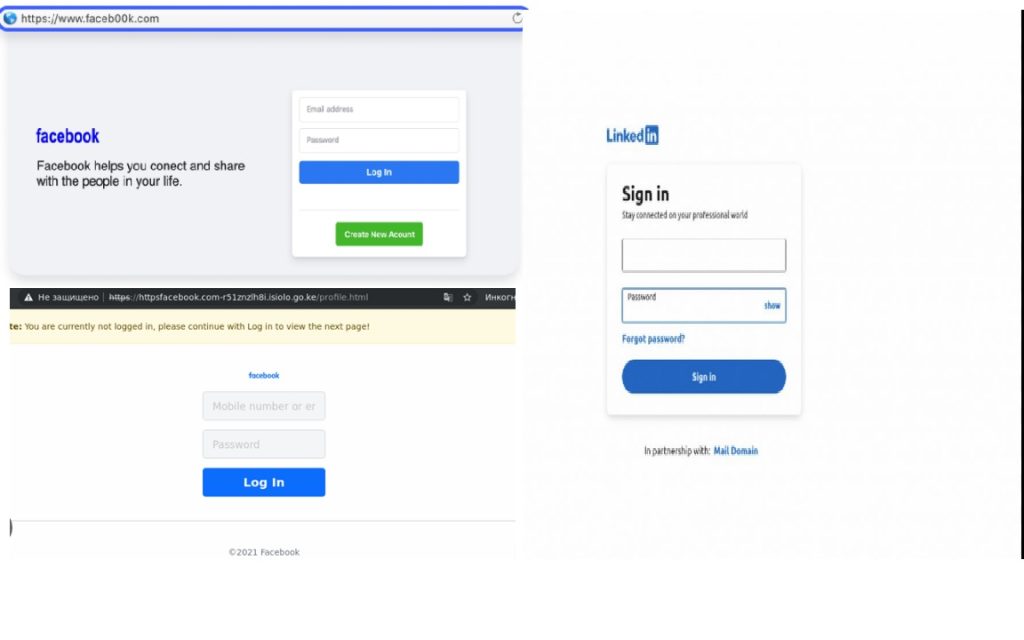Can you spot three fake websites and compare the three fake websites to three real websites, plus showcase what makes the fake websites fake?

Spotting fake websites are sometimes very difficult. Some obvious signs of fake websites may be distinguishable by its missing interface parts. In the LinkedIn example, it is suspicious for two reasons: the login name box is not uniform (thin top border), and below the credential box has “In partnership with Mail Domain.” In the top left Facebook fake web page, its presentation seems legitimate and one could concur just by looking solely at its web presentation, legitimate. Although, fake sites like this, scammers and cybercriminals alike, are more elusive with their tactics. Careful attention to the URL (Domain Name) must be made and (faceb00k) gives itself away as a fake website. Lastly, the most difficult one to distinguish as a fake website (bottom left Facebook webpage), its presentation and sophisticated URL to the untrained user, would look authentic. But the URL, to more trained and cognizant aware, (https) is slashed through and (httpsfacebook) 2nd level domain name exposes the webpage as a fake.
Legitimate webpages that have a mass amount of customers and clients pride themselves on its intricate and professional features which takes a surplus amount of time to develop and deploy. The companies take a lot of pride in their work and would not allow for lack of uniformity or unattractive color schemes. Further detail must be made to verify the top level, second level and applicable third level domain names of websites. For more security, one should also check the connection security to confirm if applicable: site certificates and connection security.